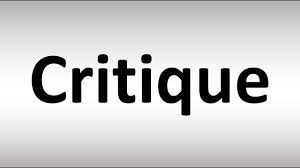The Value of Critique in Art
Art is deeply personal. Every piece reflects an artist's emotions, vision, and unique perspective. Because of this, receiving critique can be uncomfortable. Many artists hesitate to accept feedback, fearing that negative comments may reflect poorly on their abilities or even on their personal identity. However, honest, constructive feedback is crucial for growth, refinement, and pushing creative boundaries. Without it, artists can miss out on opportunities to improve their work and achieve their full potential.
For many artists, the process of creation is so intimate that it can be difficult to separate the artwork from themselves. This attachment can make criticism feel like a personal attack. Yet, when approached with an open mind, critique becomes a tool for development. It allows artists to see their work from a fresh perspective, offering insights they may have missed on their own. Critique can point out areas for improvement and suggest new techniques or concepts, helping the artist refine their craft and expand their creative vision.
However, an underlying challenge lies in the way society interacts with art. In many art communities, especially those where artists have personal connections, people are hesitant to give honest, constructive criticism. Out of respect for the artist or fear of offending them, society often refrains from commenting on bad or subpar art. This reluctance to provide candid feedback creates an environment where surface-level praise is more common than truly helpful critique. While this may feel like a kindness in the moment, it ultimately harms the artist's growth.
Without honest critique, artists can become isolated in their own perspective, blind to their weaknesses, and less likely to challenge themselves creatively. This also impacts the quality of the art in the broader community, as it can prevent artists from improving and innovating. When society avoids giving critical feedback, it perpetuates a cycle where artists fail to grow, and the art world as a whole stagnates.
Society has an important role to play in creating a culture where critique is seen as a constructive tool, not a personal attack. Encouraging artists to view feedback as a path to improvement, rather than as a negative judgment, is key to breaking down barriers. Constructive critique fosters an environment where artists are empowered to push their limits, experiment with new ideas, and create work that is more impactful and meaningful.
Critique should not only be the responsibility of artists’ peers but of society at large. When society refrains from offering honest feedback, it discourages progress. On the other hand, when critique is framed respectfully, it can inspire collaboration, mutual growth, and a richer, more dynamic art world. It helps both the artist and the community thrive.
In conclusion, critique is an essential part of an artist’s journey. It is through honest, constructive feedback that artists refine their techniques, deepen their creative vision, and ultimately create better art. Society's role in fostering an environment where critique is encouraged, respected, and valued cannot be overstated. Only then can artists grow, challenge themselves, and produce work that resonates deeply with their audience.
